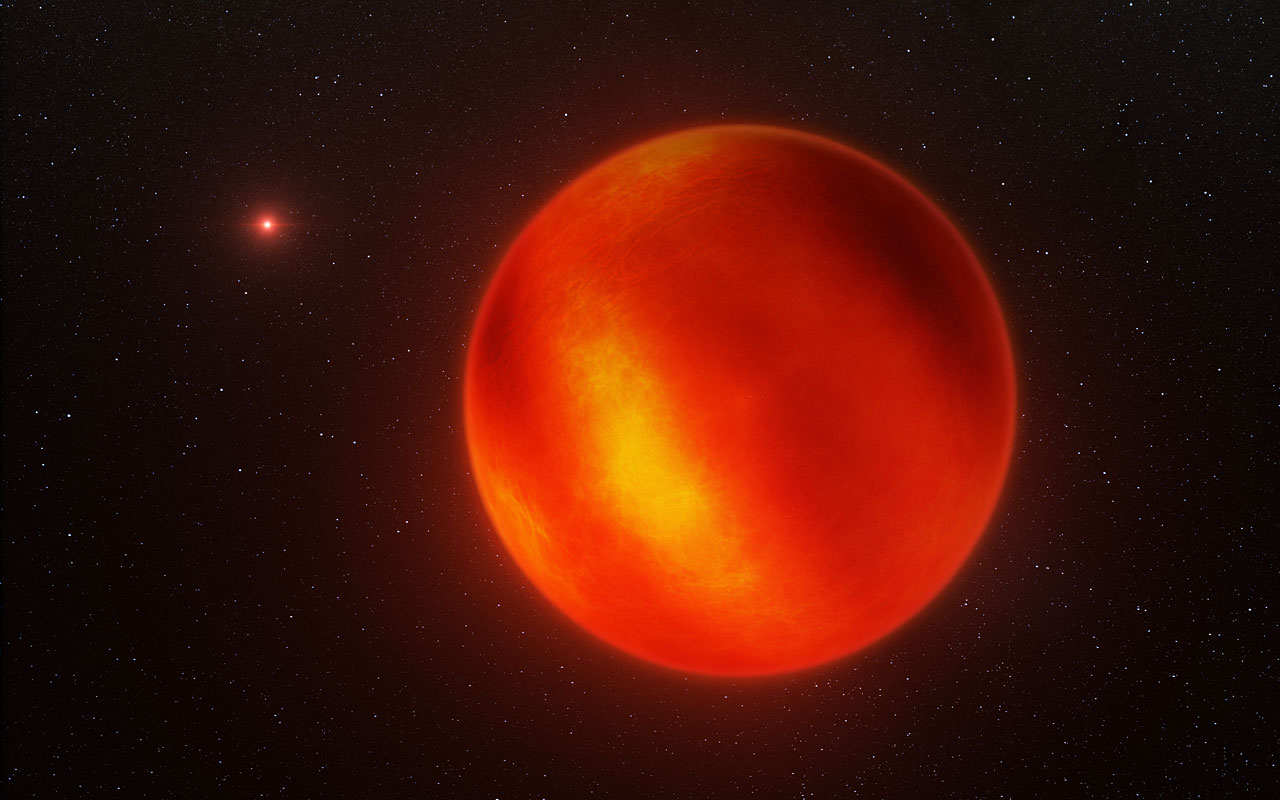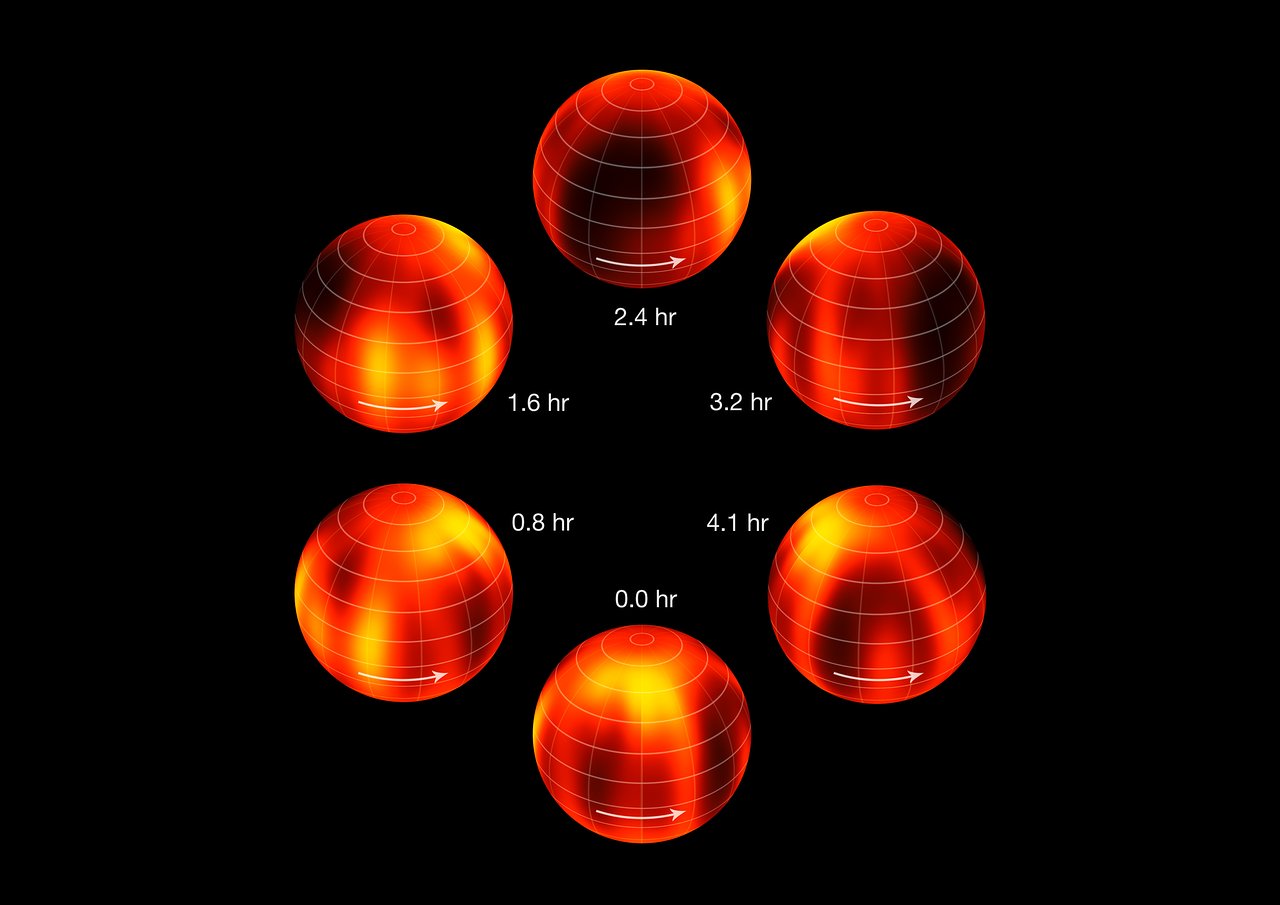 |
| Artistic rendering of clouds in the Luhman 16 system. Credit: ESO/I. Crossfield/N. Risinger |
Brown dwarfs are failed stars in the sense that they are not large enough to fuse hydrogen in their cores like our own Sun. As such, they straddle the boundary between planets like Jupiter and faint, cool stars. Gas giant planets have been found around many stars in our Galaxy, but they are frequently hard to study given the proximity to their host stars. Brown dwarfs provide an alternative as they can be studied more carefully without worrying about a bright star being too close.
One aspect of giant planet and brown dwarf science that has been active of late has been the study of their atmospheres. To this effort, Dr. Ian Crossfield, of the Max Planck Institute for Astronomy, and his team have created an impressively detailed map of the closest brown dwarf system we know.
Luhman 16 is the colloquial name given to WISE J104915.57-531906.1. I think we can all agree that "Luhman 16" is a far easier name to remember than the WISE phone number-like designation. Luhman 16 got a lot of press last year when it was discovered to be the closest brown dwarf system known. At a distance of only 6.5 lightyears (ly), it became the third closest system we know. Only Alpha Centauri (4 ly) and Barnard's star (6 ly) are closer. Luhman 16 is also a binary, so it's actually composed of two brown dwarfs, whose components are usually referred to as A and B. Given its proximity, Luhman 16 quickly became the target of many studies to characterize the system.
One such study was lead by Dr. Crossfield in order to understand the cloud structure of the B component of this binary. His team used the CRIRES instrument on the Very Large Telescope in northern Chile to observe the system. While a direct map of the surface is, at the moment, impossible, the team used the clever technique of Dopper imaging. This involves monitoring the light of the brown dwarf as it rotated and using that information to reconstruct what the cloud surface looks like.
The result is breathtaking:
 |
| Map of Luhman 16B. Credit: ESO/I. Crossfield |
As if this weren't cool enough, Dr. Crossfield has created a pair of printouts that you can cut to create a box or sphere copy of Luhman 16B. You could have your very own brown dwarf in your desk!
Check it out:
 |
| Printable map of Luhman 16B. Check out Dr. Crossfield's website for instructions and the full-sized version. |
For more details, pictures, and videos of Luhman 16, check out the ESO press release, the MPIA press release, or Dr. Crossfield's website. Congratulations to the team for such great results!
No comments:
Post a Comment
Note: Only a member of this blog may post a comment.